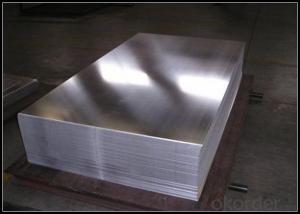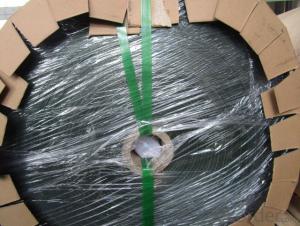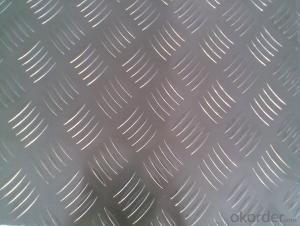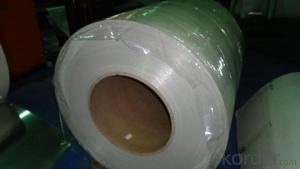4 X 8 Aluminum Sheets for Sale - DIN 1747 Aluminum Sheet
- Loading Port:
- Shanghai
- Payment Terms:
- TT OR LC
- Min Order Qty:
- 5 m.t.
- Supply Capability:
- 1000 m.t./month
OKorder Service Pledge
OKorder Financial Service
You Might Also Like
Specification
1. Structure of Auminium Sheet with German Standard DIN 1747 Description
Auminium Sheet with German Standard DIN 1747 is semi-finished aluminium material. This coil can be rolled down to aluminium coil,sheet,circle ect. The alloy AA1050 is widly used in building, industry ect. Its weight is much lower than steel. So many customers choosed aluminium material instead of steel.
2. Specification of Auminium Sheet with German Standard DIN 1747
Auminium Sheet with German Standard DIN 1747 | |
Main Specification | |
Alloy | AA1xxx (AA1050, AA1060, AA1070, AA1100 etc.) |
AA3xxx (AA3003, AA3004, AA3005, AA3105 etc.) | |
AA5xxx, AA6XXX (AA5052,AA5083, AA5754, AA6061, AA6062 etc.) | |
AA8xxx(AA8011, AA8006 etc.) | |
Temper | H14,H16, H18, H22, H24, H26, H32,O/F, T4, T6, T651 |
Thickmess | 0.01mm-100mm |
Width | 30mm-1700mm |
Standard | GB/T 3880-2006/ASTM |
Special specification is available on customer's requirement | |
3. Application of Auminium Sheet with German Standard DIN 1747
(1).Interior: wall cladding, ceilings, bathrooms, kitchens and balconies, shutters, doors...
(2).Exterior: wall cladding, facades, roofing, canopies, tunnels,column covers , renovations...
(3).Advertisement: display platforms, signboards, fascia, shop fronts...
4. Feature of Auminium Sheet with German Standard DIN 1747
Surfact Quality :
Be free from Oil Stain, Dent, Inclusion, Scratches, Stain, Oxide Dicoloration, Breaks, Corrosion, Roll Marks, Dirt Streaks and other defect which will interfere with use,
Mechenical Property:
Chemical Composite and Mechanical Property
5. Certificate of Auminium Sheet with German Standard DIN 1747
SGS and ROHS(if client request, paid by client), MTC(plant provided), Certificate of Origin(FORM A, FORM E, CO), Bureau Veritas and SGS (if client request, paid by client), CIQS certificate
6. Image of Auminium Sheet with German Standard DIN 1747
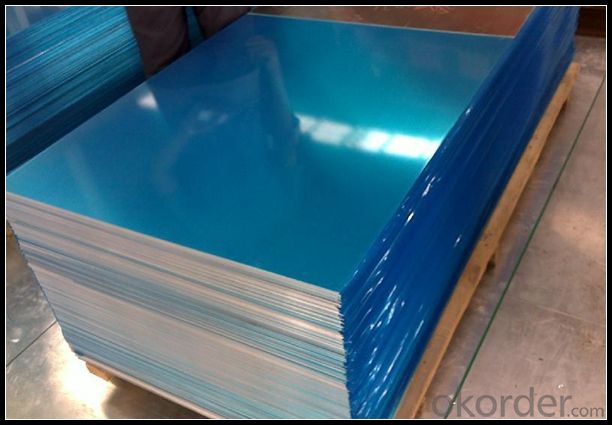
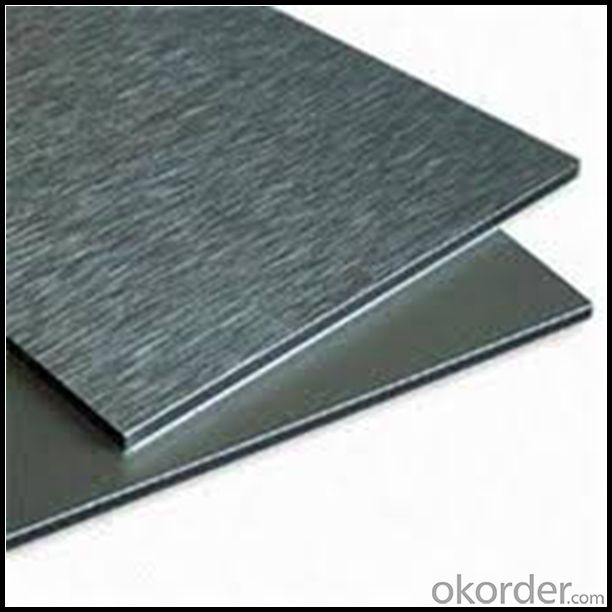
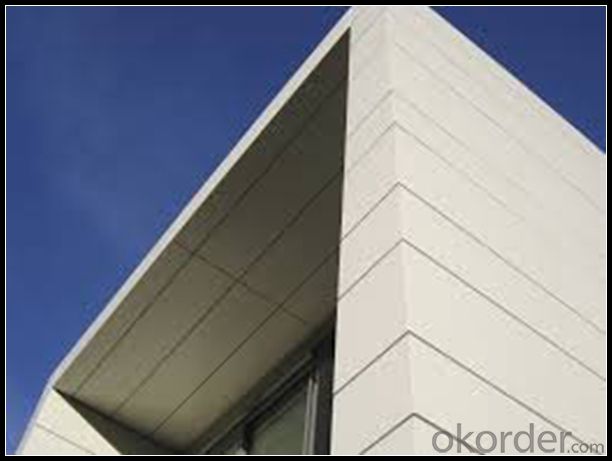
7. Package and shipping of Auminium Sheet with German Standard DIN 1747
First, plastic cloth with drying agent inside; Second, Pearl Wool ; Third, wooden cases with dry agent , fumigation wooden pallets, aluminum surface could cover blue PVC film
8. FAQ
1) What is the delivery time?
Depends on actual order, around 20 to 35 days
2) What is the QC system:
We have QC staff of 20 persons and advanced equipment, each production is with MTC traced from Aluminum ingot lot.
3) What market do you mainly sell to?
Australia, America, Asia, Middle East, Western Europe, Africa etc
- Q: Okay, so i swallowed some aluminum foil like the size of a quarter from my fruit rollup wrapper, ha don't ask why? but my stomach KINDA hurts right now...like 2 minutes later.. Could this have done any damage to me.?
- lol... You should be fine. But it may hurt a little coming out the other end? I don't know. One thing I do know: I swallowed a penny when I was a child and never had any trouble.
- Q: I can't seem to find what uses or contains Aluminum Nitride. Help!
- Don't know where you looked, but this came up with very basic web search. Metallization methods are available to allow Aluminium nitride to be used in electronics applications similar to those of alumina and beryllium oxide. Among the applications of Aluminium nitride are opto-electronics, dielectric layers in optical storage media, electronic substrates, chip carriers where high thermal conductivity is essential, military applications, as a crucible to grow crystals of gallium arsenide, steel and semiconductor manufacturing. Epitaxially grown thin film crystalline aluminium nitride is also used for surface acoustic wave sensors (SAW's) deposited on silicon wafers because of the Aluminium nitride's piezoelectric properties. One application is an RF filter used in mobile phones called a thin film bulk acoustic resonator (FBAR). This is a MEMS device that uses aluminium nitride sandwiched between two metal layers.
- Q: Can aluminum sheets be used for roof flashing?
- Yes, aluminum sheets can be used for roof flashing. Aluminum is a popular choice for roof flashing due to its durability, corrosion resistance, and lightweight properties. It provides a reliable barrier against water penetration and helps to redirect water away from vulnerable areas on the roof, such as valleys and chimneys. Additionally, aluminum flashing is relatively easy to install and maintain, making it a practical choice for roof flashing purposes.
- Q: This question asks for guidance on selecting aluminum sheets based on their intended use, implying a need for criteria or factors to consider when making such a choice.
- <p>When choosing aluminum sheets for different purposes, consider the following factors: 1) Thickness: Depending on the strength and durability required, select the appropriate thickness. 2) Alloy Type: Different alloys have varying properties; for instance, 1100 series is purest and softest, while 6000 series offers high strength. 3) Surface Finish: Choose between mill finish, anodized, or coated finishes based on aesthetic and functional needs. 4) Temper: This refers to the hardness and strength, with options like O (annealed), H14 (strain hardened), and T6 (solution heat treated). 5) Application: Consider the specific use, such as construction, automotive, or aerospace, as each may require specific properties. Always consult with a supplier or engineer for advice tailored to your project's needs.</p>
- Q: How do aluminum sheets perform in terms of electrical conductivity?
- Aluminum sheets are known for their excellent electrical conductivity, ranking just below copper in terms of efficiency.
- Q: Can aluminum sheets be used for modular construction?
- Yes, aluminum sheets can be used for modular construction. Aluminum is a versatile and lightweight material that offers several benefits for modular construction projects. It is durable, corrosion-resistant, and has a high strength-to-weight ratio, making it suitable for various structural applications. Aluminum sheets can be easily fabricated and formed into different shapes and sizes, allowing for flexibility in design and construction. Additionally, aluminum is recyclable, making it an environmentally friendly choice for sustainable construction practices. Overall, aluminum sheets are a viable option for modular construction due to their strength, durability, and versatility.
- Q: What is the usage of aluminum sulfate for every ton of paper produce for kraft paper and news print
- Aluminium sulphate was the most extensively used chemical raw material in the papermaking industry. Its primary use was in the rosin sizing of paper where the rosin soap was reacted with aluminium sulphate to impart hydrophobis characteristics to the paper. The alum had a side benefit in fixing all types of anionic substances into the paper web. All types of paper, even those that were not sized, such as newsprint,were made using alum. This resulted in the paper being made under acidic conditions. The technology has changed markedly over the last 10 to 20 years with synthetic sizing agents being developed which do not require reaction with alum. In my country there is not 1kg of fine writing and printing paper made with rosin/ alum sizing, and no alum is used at all. Various synthetic highly charged cationic resins have been developed, such as polyacrylamide resins, polyethyleneimine resins, etc, whic are used as fixing and retention agents, so that alum has been virtually eliminated. To sum up the importance of aluminium sulphate as a papermaking chemical is now very limited.
- Q: Are aluminum sheets suitable for architectural louvers?
- Yes, aluminum sheets are suitable for architectural louvers. Aluminum is a popular choice for louvers due to its lightweight, durable, and corrosion-resistant properties. It can be easily molded into various shapes and sizes, making it ideal for architectural applications. Additionally, aluminum louvers offer excellent strength-to-weight ratio and can withstand harsh weather conditions, making them a reliable choice for architectural projects.
- Q: Is it possible to incorporate recycled aluminum windows into a construction or renovation project?
- <p>Yes, you can use recycled aluminum windows in your project. Recycled aluminum windows are not only environmentally friendly but also offer similar performance to new aluminum windows. They are durable, lightweight, and maintain good thermal efficiency. When selecting recycled aluminum windows, ensure they meet the required quality standards and are suitable for your project's specifications. It's also important to consider the condition of the windows and any necessary refurbishment or maintenance they might require.</p>
- Q: How do aluminum sheets perform in terms of machinability?
- Known for their excellent machinability, aluminum sheets can easily be cut, drilled, and shaped using various machining processes such as milling, turning, and drilling. Compared to materials like steel, aluminum has a low melting point and is relatively soft, making it more manageable to work with. Additionally, aluminum sheets offer good chip control, resulting in smaller and more manageable chips during machining. This not only reduces the risk of tool breakage but also improves the overall efficiency of the machining process. Furthermore, aluminum sheets possess exceptional thermal conductivity, effectively dissipating heat generated during machining. As a result, tool wear is minimized, and the life of the tool is prolonged. With their ease of machining and versatility, aluminum sheets find wide applications across various industries.
Send your message to us
4 X 8 Aluminum Sheets for Sale - DIN 1747 Aluminum Sheet
- Loading Port:
- Shanghai
- Payment Terms:
- TT OR LC
- Min Order Qty:
- 5 m.t.
- Supply Capability:
- 1000 m.t./month
OKorder Service Pledge
OKorder Financial Service
Similar products
Hot products
Hot Searches
Related keywords
